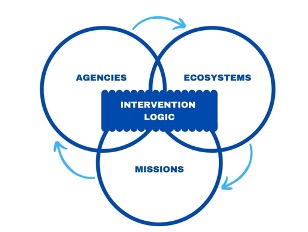The team of Insight Foresight Institute developed this study alongside experts from Fraunhofer ISI and AIT. The study examined five alternative scenarios for Europe in 2040 emerging from the COVID-19 pandemic’s disruption, focusing on their implications for EU research and innovation policy. The aim was to analyze how the pandemic’s amplification of global uncertainties might reshape long-term R&I priorities, and to provide policymakers with strategic perspectives on potential post-crisis evolution paths.

Based on extensive literature review and expert workshops, the study outlines five scenarios reflecting divergent futures shaped by the pandemic’s long-term effects on research, innovation, and social resilience. Rather than predicting a single outcome, these scenarios serve as strategic narratives to stimulate policy reflection and guide future decisions, exploring a range of possibilities in economic recovery, political cohesion, and societal transformation.
The five scenarios include:
- Long Recession – Europe faces sustained economic stagnation, rising nationalism, and shrinking public R&I investments.
- Back to ‘Normal’ – Attempts to return to pre-pandemic normalcy led to institutional stagnation.
- Techno-Feudal Europe – Technological power concentrates in private hands, weakening democratic oversight.
- Circular trials and real-life errors scenario – Economic model based on sharing, leasing, reuse, repair, refurbish and recycling in an (almost) closed loop.
- Green Utopia – A transformation towards equity and ecological sustainability through coordinated green transitions.

The authors outline the core methodology, including horizon scanning and scenario-building. It positions research and innovation (R&I) as central levers for navigating uncertainty and advancing EU objectives. Emphasizing the need for:
- Control over technological development.
- Resilience, adaptability and crisis preparedness for times of crises.
- The key role of education.
- EU level financing for R&I.
- Regional disparities in R&I performance.
- Defining future priorities in R&I policy.
The report concludes with a call to reimagine Europe’s future beyond recovery—to build a more inclusive, forward-looking, and resilient Union. It recognizes that Covid-19 was not merely a crisis, but a pivotal moment to reshape the trajectories of European integration, innovation, and sustainability.
Authors
European Commission. Dictorate-General for Research and Innovation – Kerstin Cuhls (coordination, Fraunhofer ISI), Aaron Rosa (Fraunhofer ISI), Matthias Weber (AIT), Susanne Giesecke (AIT), Dana Wasserbacher (AIT), Totti Könnölä (IFI).





